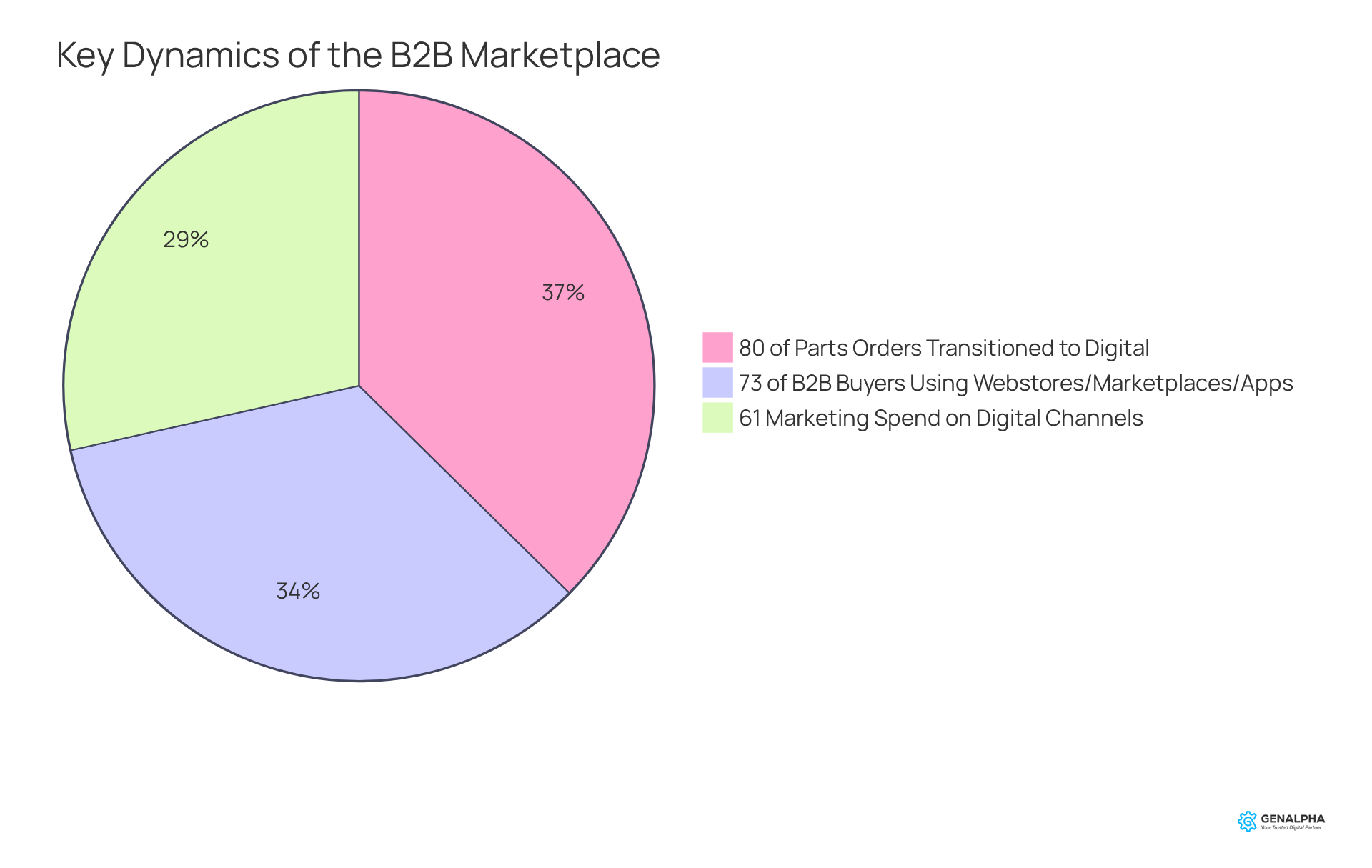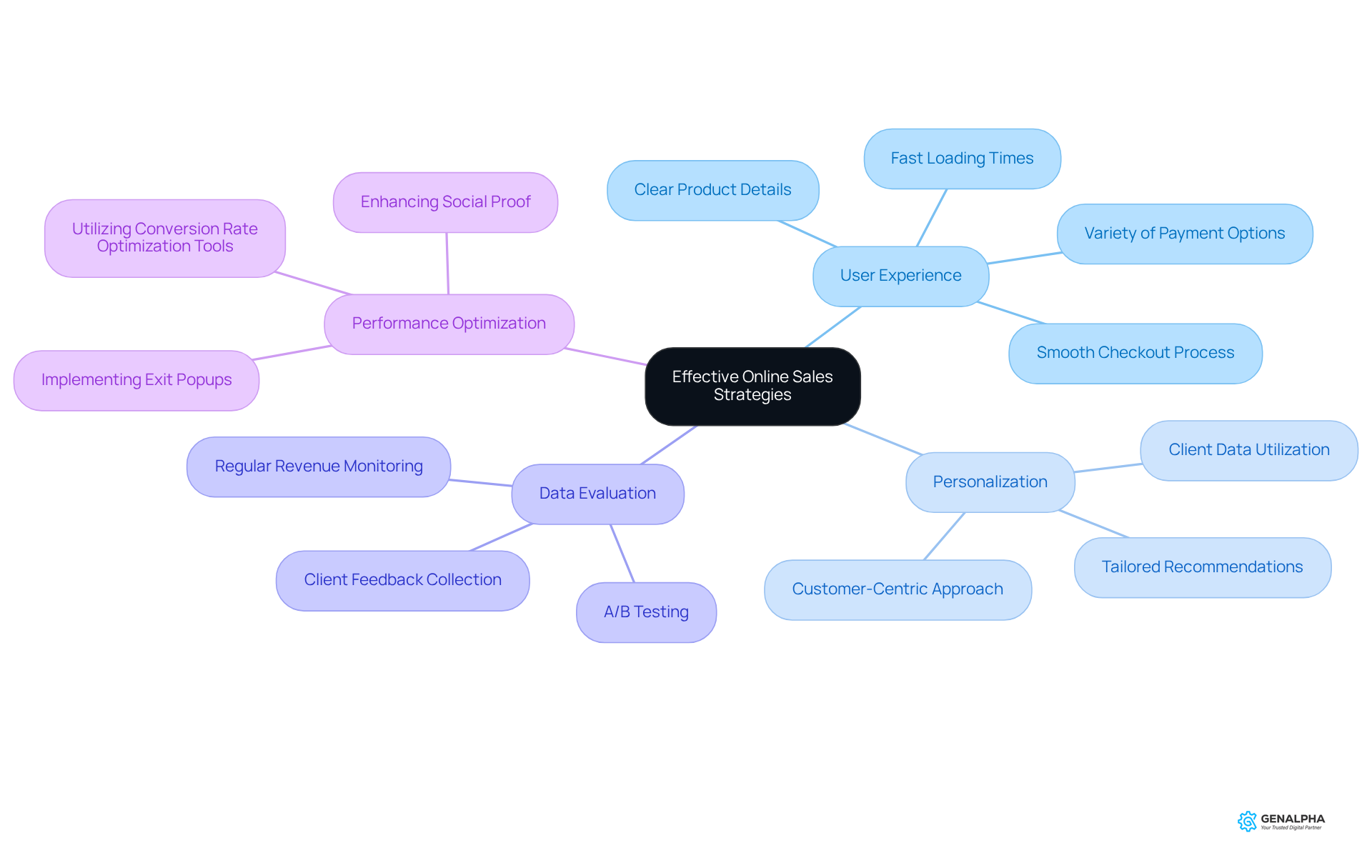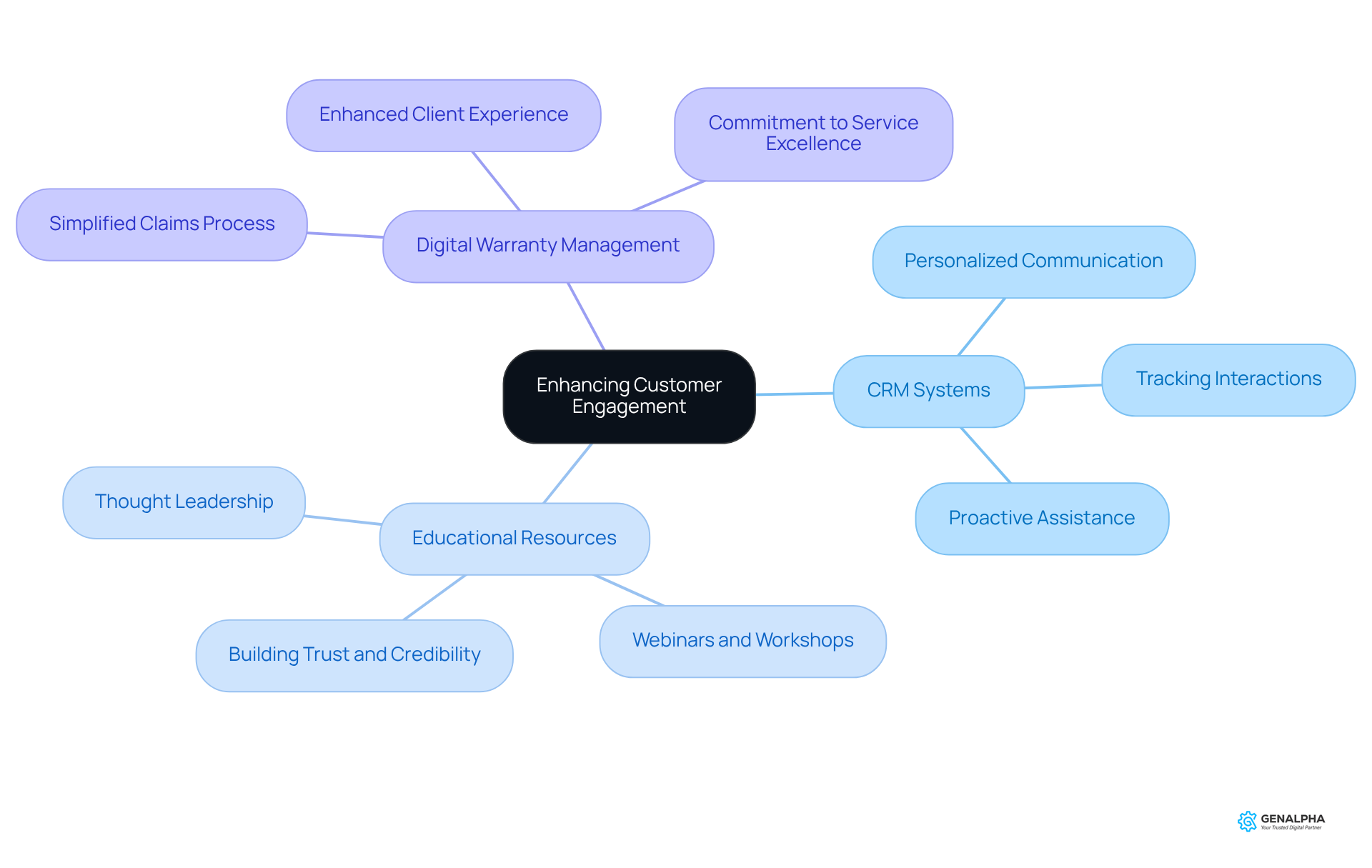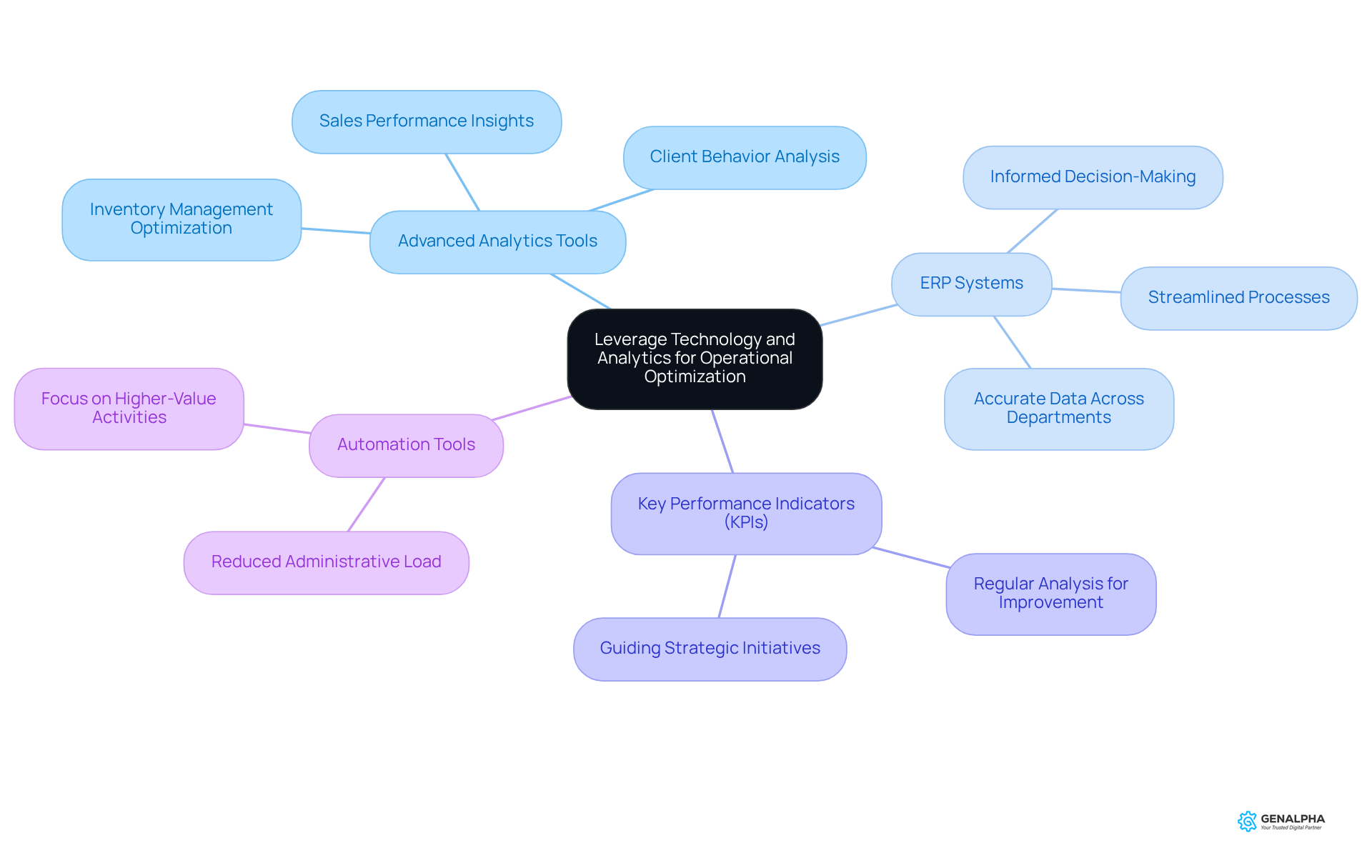Overview
In today's fast-paced business-to-business (B2B) marketplace, success isn't just a goal—it's a journey we can all take together! So, how can we navigate this landscape effectively? Well, let’s dive into four key strategies that can really make a difference:
- Optimizing online sales strategies
- Enhancing customer engagement
- Leveraging technology
- Utilizing analytics for operational efficiency
First off, let’s talk about the importance of personalized experiences. Businesses that truly connect with their clients often see a boost in satisfaction and retention rates. For example, using CRM systems can help tailor interactions, making clients feel valued and understood.
Additionally, adopting advanced analytics isn’t just a techy buzzword; it's a game-changer! By analyzing data, businesses can pinpoint what works and what doesn’t, leading to improved sales performance. Imagine being able to anticipate your clients' needs before they even express them!
So, what’s the takeaway here? By implementing these strategies, not only can you enhance your operational efficiency, but you can also create a more engaging experience for your clients. Are you ready to take action and transform your B2B approach? Let’s get started on this exciting journey together!
Introduction
Navigating the complexities of the business-to-business (B2B) marketplace can feel like a daunting task, right? It’s all about understanding those unique dynamics, like those lengthy sales cycles and the importance of building long-term relationships. Did you know that a staggering 73% of B2B buyers prefer online interactions? This shift towards digital channels opens up a significant opportunity for organizations to refine their strategies and boost customer engagement. But with buyer behavior and expectations changing so rapidly, how can companies not just adapt but truly thrive in this evolving landscape? Let’s explore this together!
Understand the B2B Marketplace Dynamics
The unique aspects of the business to business marketplace include extended sales cycles, multiple decision-makers, and a strong focus on building long-term relationships. Have you ever considered how these dynamics play out for manufacturers and distributors trying to refine their strategies? One significant trend we’re seeing is the increasing reliance on digital channels; in fact, 61% of total marketing spend is now directed towards online platforms. This shift reflects a strategic pivot in response to changing consumer behaviors across various sectors.
Moreover, it’s fascinating to note that 73% of B2B buyers prefer engaging through webstores, online marketplaces, and mobile apps within the business to business marketplace. This underscores a growing demand for personalized experiences and seamless interactions. Just think about it: an impressive 80% of parts orders have transitioned to digital channels within just a year of implementing eCommerce. This highlights the urgency for businesses to adapt!
Transparency in pricing and product information has become a must. Buyers today expect clarity and accessibility more than ever. The move towards data-informed decision-making is also crucial; insights gained from analytics are key to guiding strategies and enhancing audience targeting. Businesses that harness Customer Data Platforms (CDPs) and integrate AI into their operations can craft more tailored and effective marketing campaigns. This not only boosts client satisfaction but also improves revenue efficiency.
By understanding these dynamics, businesses can effectively position themselves within the business to business marketplace to meet their clients' evolving needs and maintain a competitive edge. So, how are you planning to adapt to these changes?

Implement Effective Online Sales Strategies
To nail effective online marketing strategies, businesses really need to focus on optimizing their eCommerce platforms for user experience. Think about it:
- Product details should be crystal clear and thorough.
- The checkout process needs to be smooth.
- Offering various payment options can really cater to different consumer preferences.
Tools like Equip360 can be game-changers here, helping to boost inventory management and streamline order fulfillment, especially in the manufacturing sector. For example, when Equip360 integrates with existing ERP systems, it can lead to smoother operations and better sales performance.
Now, let’s talk personalization. It’s a big deal when it comes to enhancing conversion rates. By using client data to tailor recommendations and communications, businesses can create a shopping experience that’s genuinely engaging. Did you know that companies adopting a customer-centric approach can see a whopping 42% revenue growth? That’s what recent industry reports say! Plus, having at least 50 reviews can bump up conversion rates by as much as 4.6%. It really shows how important social proof is in boosting client engagement.
But here’s the thing: consistently evaluating revenue data and client feedback is crucial for fine-tuning these strategies over time. This ensures they remain effective and adaptable to the ever-changing market. And let’s not forget about loading times—prioritizing fast loading is key because online shoppers tend to ditch slow websites in a heartbeat. By continually adapting to user preferences and optimizing the online shopping experience, companies can drive significant improvements in their sales performance within the business to business marketplace. So, are you ready to take your online marketing to the next level?

Enhance Customer Engagement and Relationship Management
Improving client involvement means nurturing meaningful interactions at every touchpoint. Think about it: investing in client relationship management (CRM) systems is a game changer for manufacturers. These tools help track interactions and preferences, making personalized communication a breeze. Consistent follow-ups and proactive assistance can really boost client satisfaction. In fact, research shows that firms with high participation scores can outpace their competitors by up to 30% in sales and retention metrics. And here's a fun fact: businesses with strong omnichannel strategies retain 89% of their clients, while those with weaker strategies only keep 33%. This really highlights the need for a comprehensive interaction approach.
Now, let’s talk about offering educational resources like webinars and whitepapers. Doing so positions your company as a thought leader, building trust and credibility with clients. Organizations that roll out educational content often see a spike in engagement and loyalty since clients appreciate the value before making purchasing decisions. Plus, integrating a digital warranty management system, like the one from GenAlpha, can simplify claims processes, enhancing the client experience and showcasing your commitment to service excellence. This multifaceted approach not only strengthens relationships in the business to business marketplace but also drives long-term success in a competitive environment. So, how are you planning to enhance your client interactions today?

Leverage Technology and Analytics for Operational Optimization
Want to boost your operational efficiency? Companies today really need to tap into advanced analytics tools that provide valuable insights into sales performance, client behavior, and inventory management. By integrating a solid ERP system, you can streamline processes, making sure that data is accurate across different departments. This not only helps with informed decision-making but also keeps everyone on the same page.
Have you ever thought about how regular analysis of key performance indicators (KPIs) can pinpoint areas that need improvement? It’s essential for guiding your strategic initiatives. Plus, implementing automation tools—like those offered by HubSpot—can lighten the administrative load and free up resources. This way, your teams can focus on higher-value activities that really matter.
By fully embracing technology and data analytics, including real-time insights to identify customers who might be at risk, organizations can significantly enhance their responsiveness to market changes. So, why not dive in and see how these tools can improve your overall operational effectiveness? It’s time to take action and make technology work for you!

Conclusion
In today's competitive B2B marketplace, getting a grip on its unique dynamics is key to success. Have you noticed how B2B buyers are shifting towards digital channels and personalized experiences? Companies that adapt to these evolving preferences are the ones that will truly thrive. By embracing these changes, businesses can better meet client needs and cultivate long-lasting relationships.
So, what are some key strategies to consider? First off, implementing effective online sales techniques is crucial. Enhancing customer engagement through personalized communication can make a world of difference. And let’s not forget about leveraging technology and analytics for operational optimization. Clear product details, smooth checkout processes, and a customer-centric approach are vital—they significantly impact conversion rates and client satisfaction. Plus, investing in CRM systems and educational resources can nurture those valuable relationships, positioning companies as trusted industry leaders.
Ultimately, the message is clear: businesses must embrace innovation and adapt their strategies to stay competitive in the B2B landscape. By prioritizing customer engagement, optimizing online sales, and utilizing technology-driven insights, companies can enhance their operational efficiency and secure lasting success. The time to act is now! Let’s take proactive steps to refine our approaches and leverage the tools available to navigate the complexities of the B2B environment effectively.
Frequently Asked Questions
What are the unique aspects of the B2B marketplace?
The unique aspects of the B2B marketplace include extended sales cycles, multiple decision-makers, and a strong focus on building long-term relationships.
How is the marketing strategy changing in the B2B sector?
There is an increasing reliance on digital channels, with 61% of total marketing spend now directed towards online platforms, reflecting a strategic pivot in response to changing consumer behaviors.
What do B2B buyers prefer when engaging with businesses?
73% of B2B buyers prefer engaging through webstores, online marketplaces, and mobile apps, indicating a demand for personalized experiences and seamless interactions.
What trend has been observed regarding parts orders in the B2B marketplace?
An impressive 80% of parts orders have transitioned to digital channels within just a year of implementing eCommerce, highlighting the urgency for businesses to adapt.
What do buyers expect in terms of pricing and product information?
Buyers today expect transparency in pricing and product information, with a demand for clarity and accessibility.
Why is data-informed decision-making important in the B2B marketplace?
Data-informed decision-making is crucial as insights gained from analytics guide strategies and enhance audience targeting.
How can businesses improve their marketing campaigns in the B2B sector?
Businesses that harness Customer Data Platforms (CDPs) and integrate AI into their operations can create more tailored and effective marketing campaigns, boosting client satisfaction and improving revenue efficiency.
What should businesses consider to maintain a competitive edge in the B2B marketplace?
Businesses should understand the dynamics of the B2B marketplace to effectively position themselves, meet clients' evolving needs, and maintain a competitive edge.




